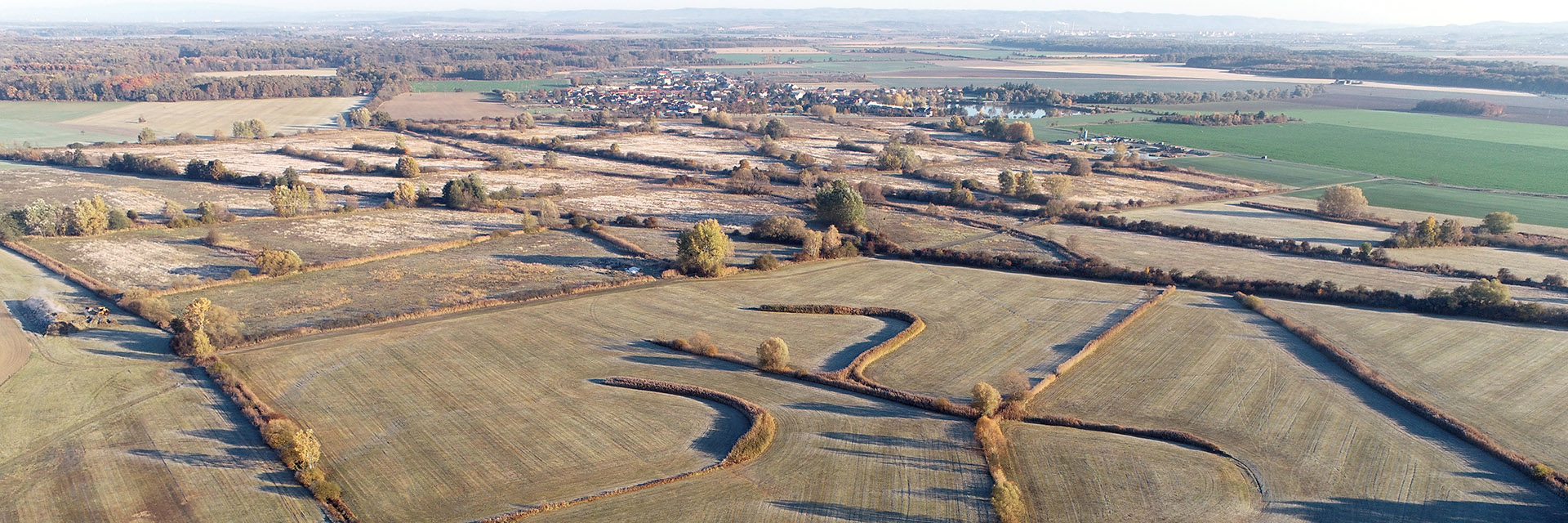Project background
Hydromelioration structures accompany society and the landscape of the Czech lands for the greater part of the 19th century and beyond. Many historical realizations have ceased to be used and only a small part are part of heritage-protected buildings and areas. Also, a large part of the implementation of irrigation systems and objects after 1948 was abandoned for economic reasons after 1989 and is in various states. As a framework for these implementations, it was examined and described by VÚMOP staff in materials for the State Land Office and the Ministry of Agriculture of the Czech Republic. Currently, in connection with the occurrence of drought, especially in the last five years, the issue of the use of irrigation, their new realizations, but also the use of historical buildings, is again widely discussed.
With regard to changes in climatic conditions and the expected increase in interest in assessing the condition and possibilities of restoration of existing irrigation systems, it is important to thoroughly map, document and describe the existing condition of the buildings, also from the point of view of historic preservation. As a framework, the evaluation can be based on the approaches and criteria for the evaluation of cultural monuments published in the methodologies of the National Institute of Natural Resources and Environment. For the identification and evaluation of the cultural-historical values of irrigation objects, the branch methodology for the evaluation of historical water management objects, which is currently being prepared in cooperation with the solving teams under the leadership of TGM WRI within the project “Historic water management objects, their values, functions and significance for the present time”, will be used appropriately. In connection with the possible new development of irrigation in the territory of the Czech Republic, we consider it beneficial to map and describe the history of this field in detail, to document preserved objects from a cultural-historical point of view and to popularize everything in an accessible form to the general public, to experts outside of water management and agriculture, and especially to students of secondary schools and universities, who may or will encounter this field in their professional practice.
Project aims
In the broader context of the current fight against the effects of drought, the project should contribute to increasing awareness of the history of irrigation planning, construction and maintenance in the Czech lands and the transfer of this heritage to the present, including at the local level. The main goal of the project solution is to document and popularize the history of irrigation and part of the industry associated with their implementation and production of soil irrigation equipment as specific sectors of water management and industrial heritage in detail and in summary. In modern history, practically since the 19th century, irrigation in the Czech lands has undergone great development. In the 1990s, however, they experienced a significant decline. However, in the last few years, the issue of irrigation has again become a subject of interest in connection with the more frequent occurrence of drought.
Project methodology
The goal of the project will be achieved through archival work, the processing of available analysis of documents, especially historical documentation, plans, but also the current survey of irrigation objects and systems. The survey of selected systems will be carried out using modern UAV technologies. The data will be analyzed and visualized using GIS tools, etc. The processing of all acquired documents will result in the creation of planned outputs. First of all, a set of maps will be created for individual territories. The maps will show in detail the route and condition of preserved and defunct irrigation systems, the identification of their cultural-historical values, the potential for restoration and further use, but also the existing risks of preservation and use, for each of the areas of interest. Publicity, presentation and access to comprehensive information on the water management issue will be ensured in the form of electronic, widely available, educational materials and the realization of an exhibition supplemented by a peer-reviewed critical catalogue. In addition to teaching materials and map results, the permanent availability of collected and processed materials on the issue of irrigation will also be ensured through a specialized database connected to a map server focused on land reclamation issues (the so-called ISMS), operated on the VÚMOP website.
In accordance with the proposed goals, the project solution is divided into three stages, which should be started gradually during the project solution period:
- first stage (2020–2021): “Compilation of research and archive work, processing of technical documentation, overview of the state of irrigation”,
- second stage (2021-2022): “Detailed field survey – documentation, description and visualization of irrigation systems”,
- third stage (2022): “Processing and presentation of project outputs”.


